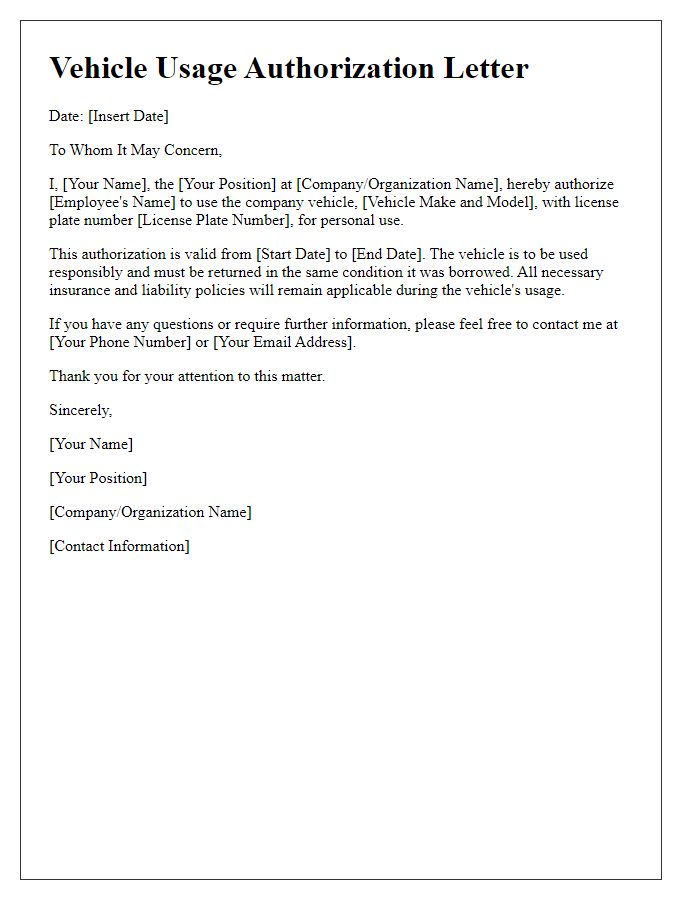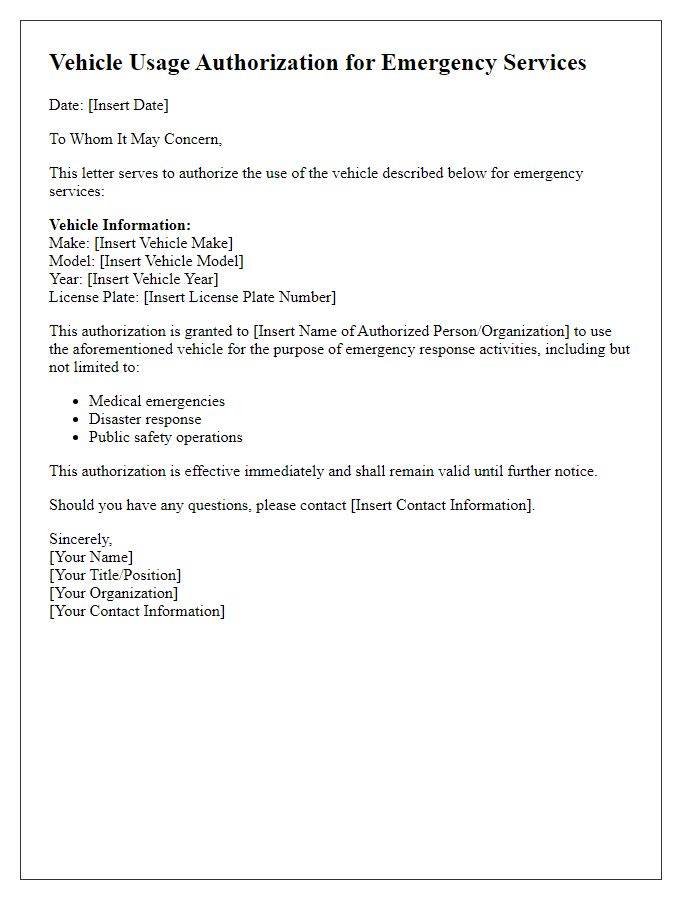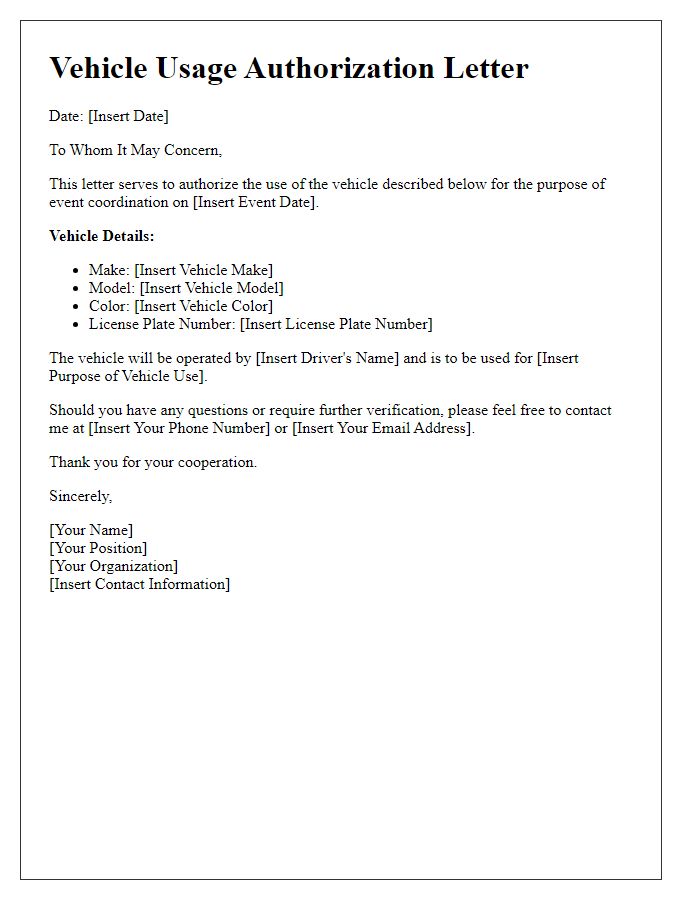Whether you're looking to grant permission for someone to use your vehicle or need a formal way to document this arrangement, a vehicle usage authorization letter can be the perfect solution. This simple yet effective document ensures that both parties understand the terms and conditions under which the vehicle will be used, offering peace of mind and clarity. It's easy to create, and it only takes a few key pieces of information to get started. Ready to learn how to draft one? Let's dive in!

Purpose of Authorization
Vehicle usage authorization serves as a formal document allowing individuals or entities to operate designated vehicles for specific tasks or purposes, ensuring accountability and adherence to organizational policies. This authorization typically outlines the reason for vehicle use, such as employee transportation, business-related travel, or fleet management. By defining the scope of usage, it mitigates risks associated with unauthorized access and potential misuse. The document may specify vehicle types (e.g., sedans, trucks, vans) and associated responsibilities, including fuel reimbursement, maintenance checks, and safe driving practices. Additionally, the authorization reinforces insurance policy compliance, reinforcing protection against liabilities during operation.
Vehicle Details
A vehicle usage authorization document should clearly detail the make, model, year, vehicle identification number (VIN), and license plate number of the vehicle. For example, a 2020 Honda Accord, VIN 1HGCV1F30LA012345, with license plate ABC1234, is authorized for use by designated personnel. Vehicle capacity, fuel type (e.g., gasoline, electric), and maintenance records can provide additional context. The authorization may specify permitted usage times, geographic restrictions, or mileage limits to ensure proper oversight and accountability. All associated parties must be informed of the terms and responsibilities tied to vehicle operation to maintain compliance with organizational policies.
Authorized User Information
The vehicle usage authorization process involves specific details regarding the authorized user. Collect user information such as full name, driver's license number issued by the state, and contact information including phone number and email address. Specify the purpose of vehicle use, which could include business-related tasks, personal errands, or transportation for events such as meetings or conferences. Outline usage duration, including start and end date/times, as well as any geographic restrictions for operating the vehicle. Additionally, reference the vehicle's make, model, and license plate number for identification purposes. Establish a signature line for both the authorized user and the granting authority, affirming the agreement and terms for responsible usage of the vehicle.
Duration and Conditions of Use
Vehicle usage authorization documents play a crucial role in outlining the duration and conditions under which a vehicle may be used. Typically, these documents include specific start and end dates, such as from January 1 to January 31, 2023, ensuring clarity regarding the timeframe of authorization. Conditions may involve designated routes, such as only using interstate highways or avoiding off-road travel, to maintain vehicle integrity. Additionally, requirements like daily mileage limits, often set around 100 miles, may be specified to prevent excessive wear and tear. Furthermore, stipulations regarding driver qualifications, such as a valid driver's license and a clean driving record, are essential to ensure safety and compliance with insurance policies during the usage period. Proper adherence to these terms ensures responsible vehicle management within organizational frameworks or personal use scenarios.
Contact Information
Vehicle usage authorization is essential for facilitating efficient transportation and ensuring accountability. Proper authorization documents must include contact information of responsible individuals, such as full names, phone numbers, email addresses, and organizational affiliations. Clear identification helps streamline communication between vehicle operators and management, potentially enhancing safety and adherence to company policies. Additionally, including emergency contact details can facilitate swift responses in case of incidents or compliance checks. Correctly formatted contact information fosters transparency and allows for accurate monitoring of vehicle usage within corporate or institutional frameworks.
Letter Template For Vehicle Usage Authorization Samples
Letter template of vehicle usage authorization for employee business trips

Letter template of vehicle usage authorization for student transportation












Comments